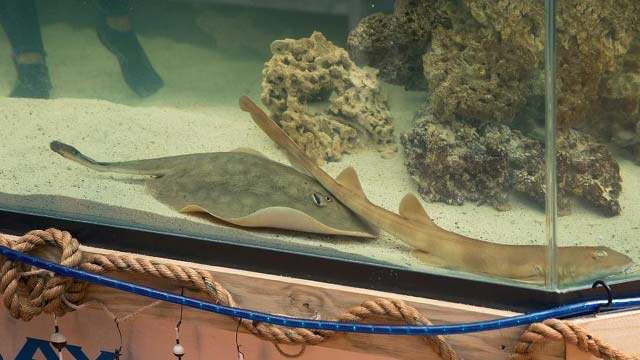
A stingray at a North Carolina aquarium, Charlotte, has tragically passed away after astonishingly becoming pregnant this winter without contact with a male of her species for many years.
HENDERSONVILLE, N.C. (AP) — Charlotte, the stingray who defied expectations by becoming pregnant at a North Carolina aquarium this winter without any interaction with a male of her species for several years, has died.
The Aquarium and Shark Lab in Hendersonville announced Charlotte’s passing on Facebook late Sunday, attributing it to a rare reproductive disease without providing further specifics.
“Today, we mournfully share that our beloved ray Charlotte has passed away following ongoing treatment with her dedicated medical team and specialists,” the aquarium shared, expressing gratitude for the outpouring of support from supporters.
Located amidst the scenic Blue Ridge Mountains, the aquarium gained international attention in February when it revealed Charlotte’s unprecedented pregnancy. The news captured the interest of late-night talk show host Jimmy Kimmel and was even featured on "Saturday Night Live."
By late May, the aquarium had disclosed Charlotte’s struggle with a rare reproductive ailment, indicating ongoing efforts to comprehend the condition.
“While studies on southern rays have been conducted, research specific to round rays remains scarce,” the aquarium noted.
In early June, the aquarium confirmed that Charlotte was no longer pregnant, prompting a temporary closure to the public starting June 1. In their recent announcement, the aquarium indicated that they would remain closed temporarily while staff continue to care for the animals.
Charlotte's pregnancy was believed to result from parthenogenesis, a form of asexual reproduction where offspring develop from unfertilized eggs, without male genetic contribution. While rare, this phenomenon has been observed in various species such as insects, fish, amphibians, birds, and reptiles, though not in mammals. Examples include California condors, Komodo dragons, and yellow-bellied water snakes.





















